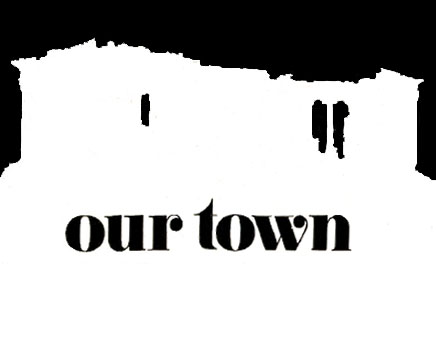
This modern-dress-amid-ancient-ruins update of A Midsummer Night’s Dream met with mixed reviews.
Although leaders from every EEC country had been invited to join the all-star cast, only the French President appeared on stage. Even Italian Premier Bettino Craxi and the President of the European Community, Jacques Delors, bowed out at the last moment and West German Foreign Minister Hans Dietrich Genscher, missing his entrance cue in the opening Acropolis scene, made his debut during the Stoa of Attalos second act.
As Titania, Queen of the Revels, Melina Mercouri, dressed from head to toe in an elegant rosy ivoire shantung creation, gave one of the more understated performances of her colorful career. Although the opening soliloquies by President Sartzetakis (Theseus), President Mitterrand (Oberon) and Prime Minister Papandreou (Robin Goodfellow), delivered from the top of the Propylaea’s steps, proved beyond doubt that they are accomplished actors, the direction by ERT-2 was inadequate and amateurish.
To see the sun set from the Acropolis is surely one of the most thrilling experiences in life, but to watch it through the eyes of a faultily-filtered, badly-focused camera in which there appeared to be at least four suns, and one a particularly vile shade of green, must have come as a shock to those used to the standards of Eurovision. Zooming arbitrarily towards and away from obscure details of Periclean architecture and interspersed with close-ups of carefully coiffed, unidentified attendant fairies – few of whom seemed to have any connection with the cultural event at hand – the camera work seriously detracted from the already flimsy plot.
The lighting was particularly disconcerting. In normal staging, light is used to illuminate the set. In this backstage glimpse of the Son et Lumiere show normally seen from the Pnyx, the du Barry pink floodlights glared directly into the eyes of the audience and gave the impression that the Acropolis has broken out into a seriously contagious rash.
The real stars of the evening were Messrs Mnesikles (designer of the Propylaea), Ictinus (designer of the Parthenon), John D. Rockefeller, Jr. (whose grant financed the reconstruction of the Stoa of Attalos) and the designer of Mrs Papandreou’s turquoise green dress (whose name did not appear among the credits).
One of the inevitable disappointments of the evening was that the composer Yiannis Xenakis’ scenario, widely published months ago, had to be cancelled after several theatrical angels (e.g., the French socialist government) dropped out when they saw the financial estimate. The brilliant, phosphores-cent-painted helicopter ballet, for instance, was cut down to one aircraft, and even this, with ERT camera on board, wobbled so drunkenly that views of the Holy Rock produced symptoms of air-sickness. As for the armada of doves lit up with tiny lightbulbs which in the original version were to fly in like clockwork from all EEC countries, these, too, were reduced to one pigeon with black tail feathers which waddled awkwardly about and gave no indication that it was marching for Peace.
Even the music was disappointing. The chorus of 500 children dressed in white and sitting on the steps of the Parthenon sang Mesomides’ second century AD “Hymn to the Sun” very prettily, but they were given hardly a minute of TV prime time before the camera began wandering off again – and now that the sun had set – among the phantasmagorical shadows of visiting cultural dignitaries. And as for the Xenakis music being blasted forth from all the mountains of Attica, instead an orchestra half-hidden among the rocks and weeds above the Odeon of Herod Atticus produced a few feeble bubbles and squeaks which, judging from his expression, left the French President singularly unmoved.
There followed a magnificent banquet scene at the Stoa of Attalos – at least for the seated. The other guests were offered a wilted buffet. Then, true to Shakespea-rean formula, there followed ‘a play within a play’. Among the highlights were excerpts from Karolos Koun’s Art Theatre performing Aristophanes’ The Acharnians. Wisely, the famous speech beginning “I’m an honest citizen; I’ve never run for office in my life” was cut from the performance as being insufficiently ‘cultural’.
But just as Peter Quince’s tragical-mirthful “Pyramus and Thisbe” is the fun part of A Midsummer Night’s Dream, so it was the street theatre performances around Athens which were the fun part of this otherwise humorless revival.
Under the shadow of the Parthenon, jugglers and acrobats, belly dancers and break dancers, clowns and quoits players from all over Europe diverted the citizens of Athens from the exhaustions of elections and the anxieties of hijacking – just as Melina and Aristophanes would have wanted them to be.








